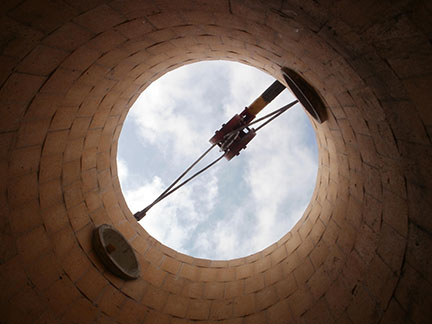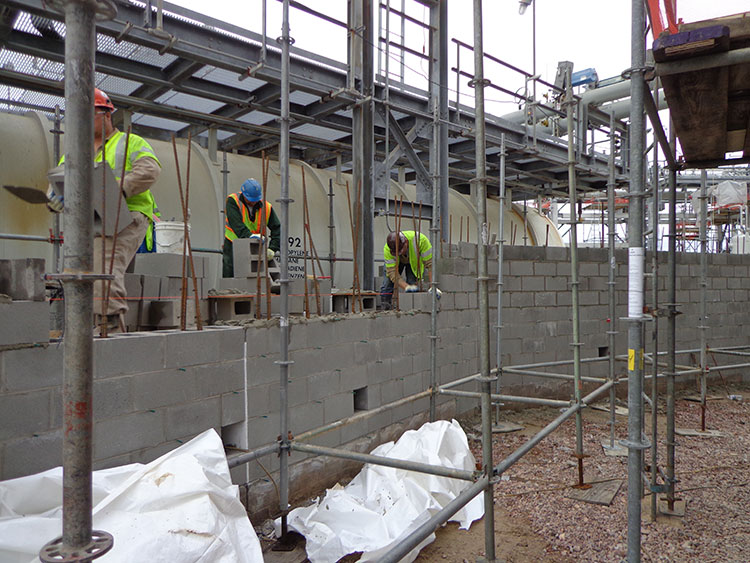Acid Brick and Coatings
Acid Brick and Coatings in Westlake, LA
These are used in a wide range of applications for paving, pit linings, drains & process vessel linings in the Chemical Process Industry.
From routine inspection, maintenance and new construction of acid brick and coatings R&H Quality Refractory Services, Inc has the manpower and equipment to perform this work.
R&H Quality Refractory Services, Inc will inspect acid brick and coatings and make the necessary repairs on floors, inside tanks, etc. We check for lining cracks, receded mortar joints, deteriorated bricks and after the repairs are complete, we provide an report outlining the work done and notations on areas that should be watched on future turnarounds.
On new construction, R&H Quality Refractory Services, Inc. can help with recommendations for materials and qualified crews to install these materials.
Our Services Include:
- Acid Bricks
- Acid Bricks for Vessel Linings
- ASTM
Quick Contact Form
Acid Bricks
The technical properties of high quality acid bricks require low porosity, resistance to a wide range of chemicals plus abrasion & impact resistance. Certain other properties such as heat resistance & resistance to thermal shock are required for certain applications.
Strength & durability of acid bricks allows their use as effective linings in a very wide range of industrial applications. Internal linings to process vessels & tanks expose them to a harsh working environment as do floor paving applications requiring chemical resistance & the ability to withstand impact & abrasion.
Acid Bricks for Vessel Linings
Acid bricks are frequently used in engineered tailor made vessel linings incorporating special shaped bricks to give a lining fitted with tight mortar filled joints. Examples of vessels lined with both special & standard acid brick are sulphuric acid plants, steel pickling lines, alum digesters, pressure vessel linings, venturis, drains & acid neutralizing pits.
Acid resistant brick in combination with an acid resistant membrane has been used to protect carbon steel equipment and concrete from corrosive chemicals. The brick itself is not totally acid resistant since a portion of the brick is acid soluble. The brick merely serves to reduce the rate at which the acid migrates to the membrane and shell. The other function of the brick lining is to reduce the temperature at the shell to a point where the acid resistant membrane used will not be damaged by high temperatures.
Two types of bricks are commonly used: Red Shale and Clay Bricks.


ASTM
The specification of acid resistant brick can be based on the requirements set forth in ASTM C279 ‘Standard Specification for Chemical-Resistant Masonry Units’ and other reference specifications. It covers both shale and clay type bricks.
Bricks are classified under three general types:
Type I – For use where low absorption and high acid resistance are not major factors. Formerly designated as Type “H”.
Type II – For use where lower absorption and higher acid resistance are required.
Type III – For use where minimum absorption and maximum acid resistance are required. Formerly designated as Type “L”.
The standard does not attempt to control the composition of the brick as it will differ depending on the source of or raw materials used to manufacture the brick. The standard does define certain physical properties to which the brick must conform.
The physical properties are:
- Strength
- Water Absorption
- Sizes
- Warpage
- Surface Texture
Further specification of acid resistant brick can be based on physical properties as set forth in the following specifications:
ASTM C20
Standard Test Methods for Apparent Porosity, Water Absorption, Apparent Specific Gravity, and Bulk Density of Burned Refractory Brick and Shapes by Boiling Water
ASTM C133
Standard Test Methods for Cold Crushing Strength and Modulus of Rupture of Refractories
ASTM C279
Standard Specification for Chemical-Resistant Masonry Units
ASTM C373
Standard Test Method for Water Absorption, Bulk Density, Apparent Porosity and Apparent Specific Gravity of Fired Whiteware Products